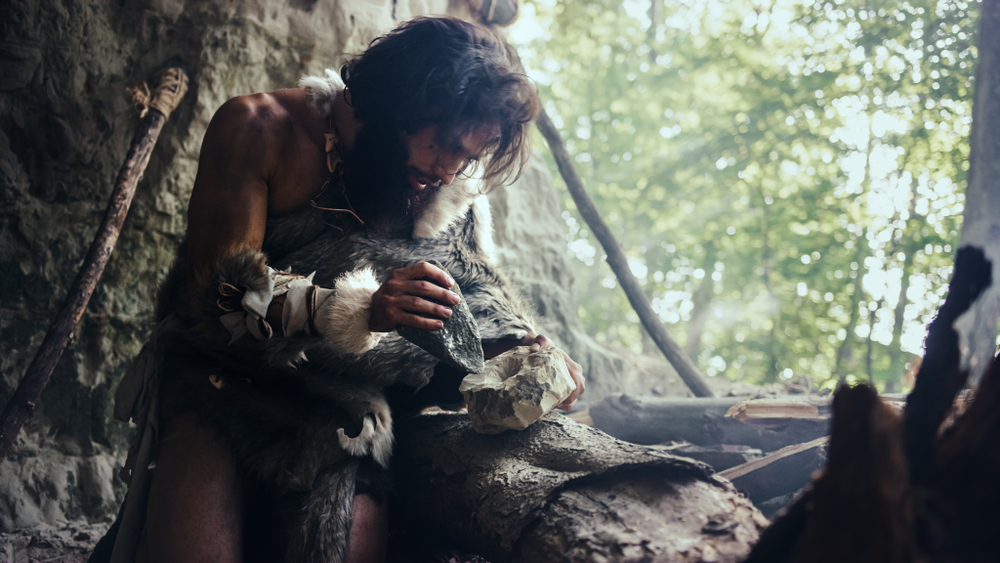Ancient Humans Made Expeditions to This 750,000-Year-Old Workshop
Posted on Categories Discover Magazine

Our understanding of our ancestors gets pretty murky when you go far enough back in time. Still, scientists have discovered numerous tools associated with Homo erectus — widely regarded as a direct ancestor to modern humans — over the years. For example, researchers recently discovered tools in Kenya (associated possibly with Paranthropus or another precursor to the Homo genus) that may date back as far as 3 million years.
But there’s a difference between making a few tools when the opportunity arises and having an actual workshop you can use and pass down to your descendants.And as scientists have been learning, our ancestors were capable of both, showing that they were making plans rather than just reacting to their immediate environment.
Indeed, researchers have now confirmed one of the earliest known workshops of the human genus at a flint rock exposure in northern Israel — a place that individuals likely used for tens of thousands of years. The work was published in June in the journal Geoarchaeology.
“They probably transferred this knowledge through many generations,” says Meir Finkel, a geoarchaeologist at Tel Aviv University in Israel and coauthor on the recent study.
Acheulean Tools Discovered in Ancient Workshop
Gesher Benot Ya’aqov (GBY) is a famous archaeological site in the Hula Valley in northern Israel. The site holds the remains of a number of large animals like elephants, as well as the stone tools used to butcher them. After being drained in the 1950s, the now-dry area was once a lake where large animals would come to drink.
Read More: Deadly Stick Recovered from Germany Dates to 300,000 Years Ago
Researchers still aren’t sure whether the hominids who lived at the site hunted elephants and other animals, or used the mud as a kind of trap where they could opportunistically kill creatures that became stuck, Finkel says. Either way, the hominids at GBY and nearby Ma’ayan Barukh, also in the Hula Valley, had a reliable food resource they returned to again and again for hundreds of thousands of years.
Thousands of hand axes and other tools have been discovered at both sites, which belong to the Acheulian style, a type of usually oval stone tool industry often associated with Homo erectus that lasted from roughly 1.7 million years ago to about 200,000 years ago. The GBY site dates to roughly 750,000 years ago, while Ma’ayan Barukh dates to about 500,000 years ago.
Where Did The Hula Valley Axes Come From?
The sheer amount of hand axes found in these Hula Valley sites had to come from somewhere. “The amount testifies to continuous exploitation of the same source,” says Finkel.
While conducting the recent study, Finkel and his colleagues ground down samples from 10 hand axes from GBY and 10 from Ma’ayan Barukh before analyzing them using a mass spectrometer, which measures the concentration of different elements in material.
Once they had the signature for the flint in the tools, they had to find a match from the source. Finkel had formerly studied a flint workshop on the Dishon Plateau, located about 12 miles west of these sites, while working towards his doctorate. At this site, earlier researchers found thousands of discarded stone tools, flakes, chips and other evidence of Acheulian tool making dating back hundreds of thousands of years.
Dishon Plateau was always a possible source of these tools. But to confirm that fact, the researchers also wanted to rule out anything else nearby. They conducted field surveys around the sites, gathering rock samples from flint exposures in the Golan Heights, Safed Mountains, Ramim Ridge and rocks from streams that drained into the valley.
Read More: Neanderthals Also Had Superior Toolmaking Abilities, Not Just Humans
In-Depth Analysis of Flint Tools
Most of the flint exposures at these sites weren’t large enough to produce the quantity of stone tools found at the Hula Valley sites. What’s more, making Acheulian hand axes isn’t very efficient; Finkel says that the production of each hand axe meant about 75-80 percent waste on average. Nothing except for the flint outcropping at Dishon would have supplied enough stone for more than a few tools.
But just to be sure, the team analyzed samples from all of these places with the mass spectrometer. The signatures of the 20 flint tools from GBY and Ma’ayan Barukh matched the stone at Dishon Plateau — showing almost definitively they all came from the same place.
“There is practically no other option for that amount of hand axes anywhere else,” Finkel says.
Going to the Dishon Plateau, which is about 20 kilometers to the west of the Hula Valley and would have required climbing about 800 meters in elevation, likely required planning on the part of the people using tools. “It’s not on the way to anywhere, they have to go specifically to this place,” Finkel says.
What Does This Discovery Mean?
Anthropologists have observed hunter-gatherers in more recent decades conducting these kinds of expeditions, traveling very far to specific places to extract specific materials they needed to make their tools, says Finkel.
The evidence in the Hula Valley and Gishon Plateau “may be the first proof of what is seen in ethnographic research,” he says. Whether Acheulian foragers waited to hunt elephants with these axes and other weapons, or just waited by the ancient Hula Lake for trapped animals, they had to be ready to strike when the time was right.
“Going to get hand axes was great planning,” Finkel adds.
Read More: Women Hunters Were Extremely Common in Ancient and Modern-Day Foraging Societies